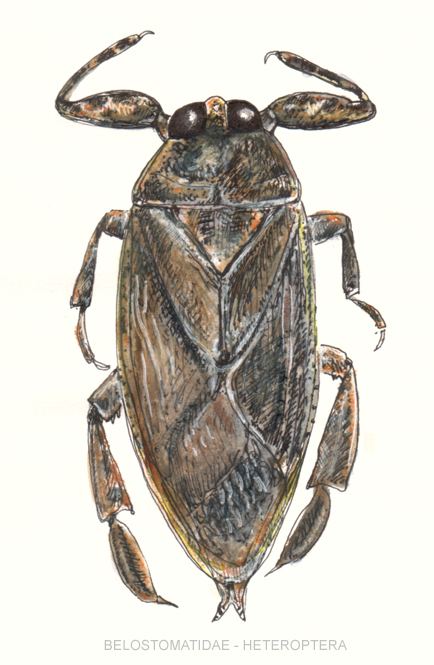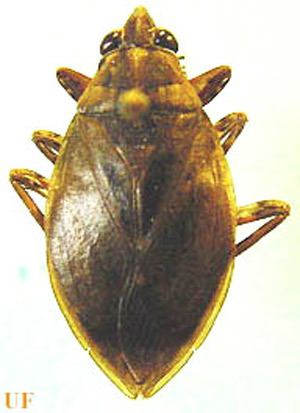Scientific name Belostomatidae Rank Family | Order True bugs Higher classification Nepomorpha | |
 | ||
Lower classifications | ||
Belostomatidae is a family of freshwater hemipteran insects known as giant water bugs or colloquially as toe-biters, Indian toe-biters, electric-light bugs, alligator ticks, or alligator fleas (in Florida). They are the largest insects in the order Hemiptera, and occur worldwide, with most of the species in North America, South America, Northern Australia, and East Asia. They are typically encountered in freshwater streams and ponds. Most species are at least 0.75 in (2 cm) long, although smaller species also exist. The largest are members of the genus Lethocerus, which can exceed 4.75 in (12 cm) and nearly reach the length of some of the larger beetles in the world. Giant water bugs are a popular food in parts of southeast Asia.
Contents
- Giant water bug toe biter alligator tick belostomatidae
- Feeding and defense
- Breeding
- In Asian cuisine
- References

Giant water bug toe biter alligator tick belostomatidae
Feeding and defense
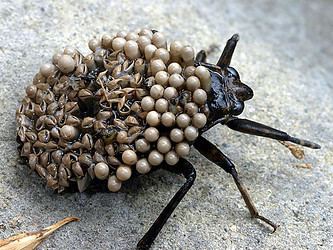
Belostomids are aggressive predators which stalk, capture, and feed on aquatic invertebrates, snails, crustaceans, fish, and amphibians. The largest species have also been found to capture and feed on baby turtles and water snakes. They often lie motionless at the bottom of a body of water, attached to various objects, where they wait for prey to come near. They then strike, injecting a powerful digestive saliva with their rostrum, and sucking out the liquefied remains. Their bite is considered one of the most painful that can be inflicted by any insect; however, though excruciatingly painful, it is of no medical significance. Adults cannot breathe under water, so must surface periodically for air. Occasionally, when encountered by a larger predator, such as a human, they have been known to "play dead" and emit a fluid from their anus. Due to this, they are assumed dead by humans only to later "come alive" with painful results.
Breeding
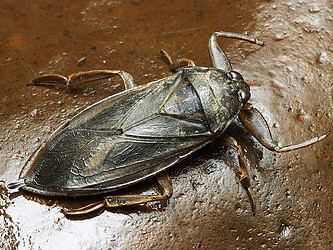
Belostomatids show paternal care and these aspects have been studied extensively, among others involving the North American Belostoma flumineum and the East Asian Lethocerus (Kirkaldyia) deyrollei. In species of the subfamily Belostomatinae, the eggs are typically laid on the male's wings and carried until they hatch. The male cannot mate during this period. The males invest considerable time and energy in reproduction and females take the role of actively finding males to mate. This role reversal matches the predictions of R. L. Trivers' parental investment theory. In the subfamily Lethocerinae, the eggs are laid on emergent vegetation and guarded by the male.
In Asian cuisine
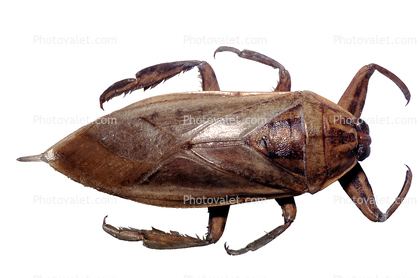
In some areas, belostomatids are considered a delicacy, and can be found for sale in markets. This is mainly in Southeast Asia involving the species Lethocerus indicus. They are often collected for this purpose using large floating traps on ponds, set with black lights to attract the bugs. Adults fly at night, like many aquatic insects, and are attracted to lights during the breeding season.
